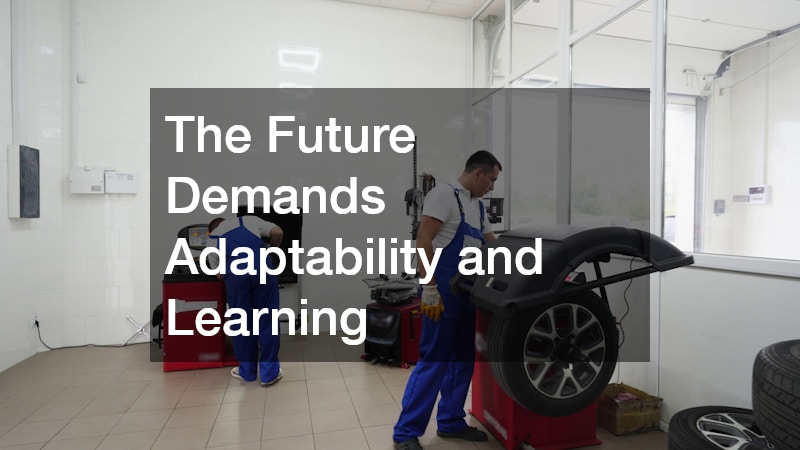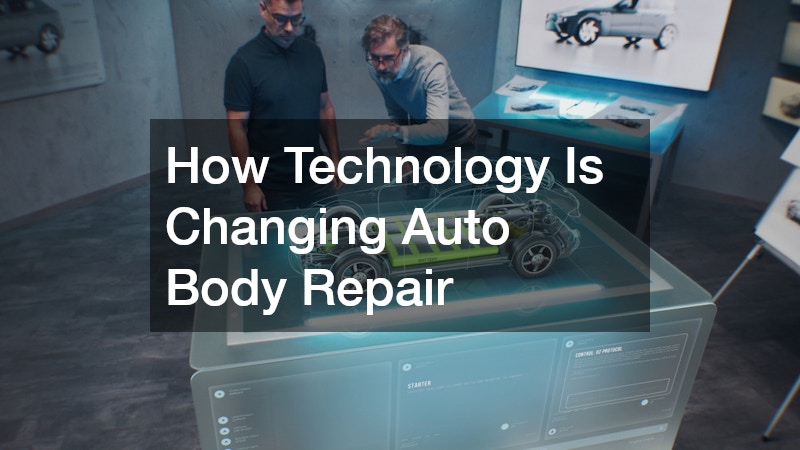Explore the transformative impact of technological advancements on the auto body repair industry, shaping how repairs are conducted and the implications for car owners, repair shops, and the industry at large.
What are the latest technologies being used in auto body repair?
Advanced Diagnostic Tools
Computerized diagnostic tools are significantly changing the auto body repair landscape. They accelerate the assessment and repair estimation process, enabling repair shops to deliver more accurate results.
These tools help in identifying underlying issues that might not be visible to the naked eye. Skilled technicians can now provide detailed repair plans, thereby enhancing customer trust and satisfaction.
The integration of advanced diagnostics contributes to a reduction in repair times, benefitting both the workshop and the car owner. This leads to increased throughput and revenue for repair shops, fostering growth within the industry.
3D Printing in Auto Parts Manufacturing
The introduction of 3D printing in auto parts manufacturing is revolutionizing the production of replacement components. It significantly reduces lead time and provides a higher level of customization to meet specific repair needs.
By leveraging 3D printing, repair shops are less dependent on inventory, enabling them to fabricate parts on demand. This flexibility is particularly advantageous for restoring older or less common vehicle models.
Customization through 3D printing not only enhances repair precision but also lowers costs. Car owners benefit from quicker, more efficient repairs as parts can be produced rapidly, ensuring the vehicle is road-ready sooner.
How has technology improved the precision and efficiency of repairs?
Automated Dent Repair Systems
Automated dent repair systems are designed to optimize precision and diminish human error in repair processes. These systems automate repetitive tasks, increasing overall repair efficiency.
With advanced sensors and scanners, these tools provide real-time data to technicians, assisting them in making more informed decisions. This means cleaner, more precise results for the vehicle’s appearance.
The efficiency of automated systems translates directly to cost savings for auto body shops. It allows them to handle a higher volume of repairs while maintaining a high level of service quality.
Laser Measuring Systems
Laser measuring tools play a crucial role in ensuring accurate alignment and structural integrity during repairs. These tools provide precise measurements that enhance the quality and safety of vehicle restorations.
By leveraging laser technology, technicians can pinpoint even the slightest deviations in a vehicle’s framework. This precision is critical in modern auto body repair, particularly for vehicles designed with advanced engineering.
The implementation of laser measuring systems in auto shops boosts customer confidence, as it guarantees adherence to manufacturer specifications. This high level of precision leads to better repair outcomes and minimized post-repair issues.
What role do software solutions play in modern auto body shops?
Management Software Integration
Advanced management software solutions are revolutionizing operations in auto body shops. From scheduling to inventory management, these tools streamline processes and enhance shop efficiency.
By automating administrative tasks, management software allows technicians to focus on their core competencies. This optimization helps in reducing overhead costs and improving service delivery.
Moreover, the seamless integration of these systems aids in data collection, enabling shops to make informed business decisions. This, in turn, fosters competitive advantage and growth in the auto repair industry.
Digital Estimation and Customer Interaction
Digital platforms have transformed the way estimates are calculated and communicated with customers. Allowing for virtual estimates, these platforms improve service efficiency and transparency.
Through digital interaction, customers are provided with a comprehensive view of the repair process and costs, fostering trust and clarity. This enhances customer satisfaction and builds long-term relationships with clients.
Improved communication channels through software also enable more proactive customer engagement. This facilitates faster resolution of inquiries and leverages feedback for continuous service improvement.
How are training and skills evolving for auto body repair technicians?
Virtual Reality (VR) Training Programs
Virtual Reality (VR) training systems are providing technicians with realistic, hands-on experiences in a risk-free environment. This immersive approach enhances learning outcomes, particularly for complex repair tasks.
VR training enables technicians to practice scenarios and refine their skills without the need for costly physical materials. This significantly reduces the learning curve, preparing technicians for real-world challenges.
By utilizing VR, training programs ensure continuous skill development in line with technological advancements. This enhances the quality and capabilities of the workforce within the auto body repair sector.
Continuous Learning Through Online Platforms
Online platforms offering courses and certifications are key to continuous education for auto body repair technicians. These resources provide up-to-date technical skills and knowledge responsive to industry trends.
Technicians can conveniently access various learning materials, allowing them to improve their competencies at their own pace. This flexibility helps in maintaining a highly skilled workforce ready to tackle emerging challenges.
Moreover, continuous online learning helps technicians stay current with evolving technologies, ensuring their skills remain relevant. This is vital for personal career growth and sustaining the competitive edge of their respective shops.
The profound changes technology has brought to auto body repair are reshaping the industry by enhancing efficiency, precision, and overall growth. As these innovations continue to evolve, auto shops and technicians are better positioned to address the increasing complexities of vehicle design and repair.
The future holds promising trends and challenges, underscoring the need for adaptability and continued learning. As the industry embraces these technological advancements, the benefits are expected to proliferate, fundamentally transforming auto body repair for the better.




